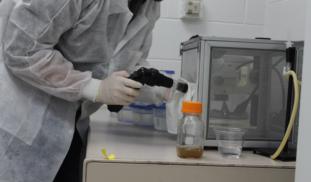92
0
0
Like?
Please wait...
About This Project
In 2011, scientists developed a unique class of antivirals named DRACOs. DRACO proteins kill cells that are infected with viruses. One limitation to this technology is that DRACO proteins would also kill cells infected with benign viruses. Humans are often infected with benign viruses. We have modified DRACOs to specifically target cells infected with a disease-causing virus without harming regular cells. This novel strategy could be used more broadly against other disease-causing viruses.

Browse Other Projects on Experiment
Related Projects
Toward ethical and affordable antivenom solutions: Can anti-toxin be animal cruelty-free?
Snakebite envenoming causes over 100,000 deaths annually, yet current antivenoms depend on animal plasma...
Microplastics: Can engineered enzymes remove microplastics from the human body?
Polyethylene terephthalate (PET) microplastics have been detected in human blood and tissues, and linked...
Shutting down cancer’s recycling system with exosome-based therapy
Pancreatic cancer is one of the deadliest cancers because its cells survive by recycling their own components...

